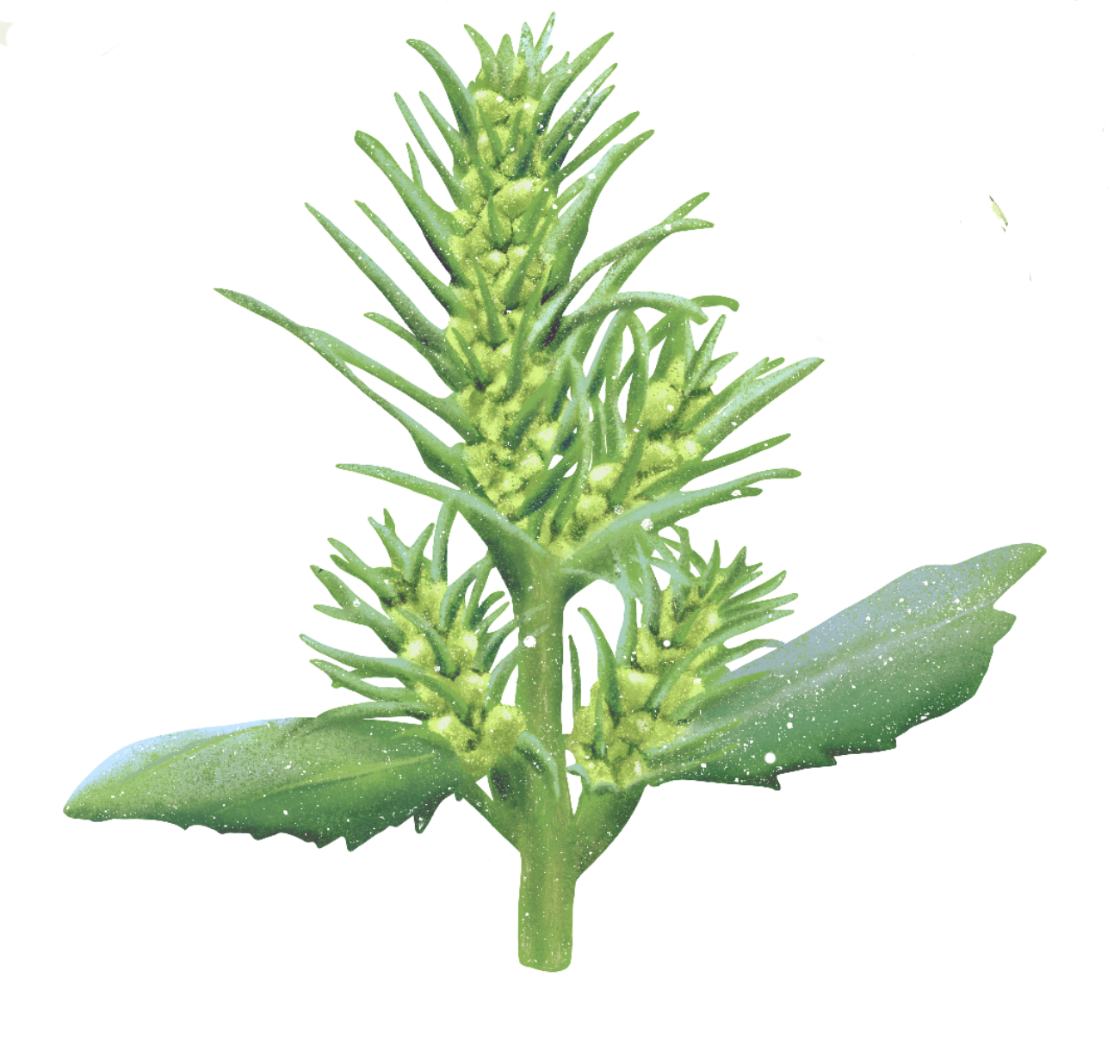
Marsh Elder
(Iva annua)
Marsh elder is a relative of sunflower and produces an edible, oily seed like sunflowers. Domesticated varieties of marsh elder no longer exist, but wild marsh elder is still quite common in wet ditches along the side of highways and in similar environments. The domestication of marsh elder can be identified in archeological specimens, which features seeds larger than modern wild seeds. Stores of marsh elder seeds, which are significantly larger than today’s wild variety, have been found in pit features and even in preserved bags from Arkansas bluff shelters. Although its strong odor makes it somewhat unpalatable to us today, we know that it was used for food because marsh elder seeds have been found in paleofeces preserved in bluff shelters. Marsh elder is certainly nutritious, with high amounts of protein, fat, iron, and calcium.
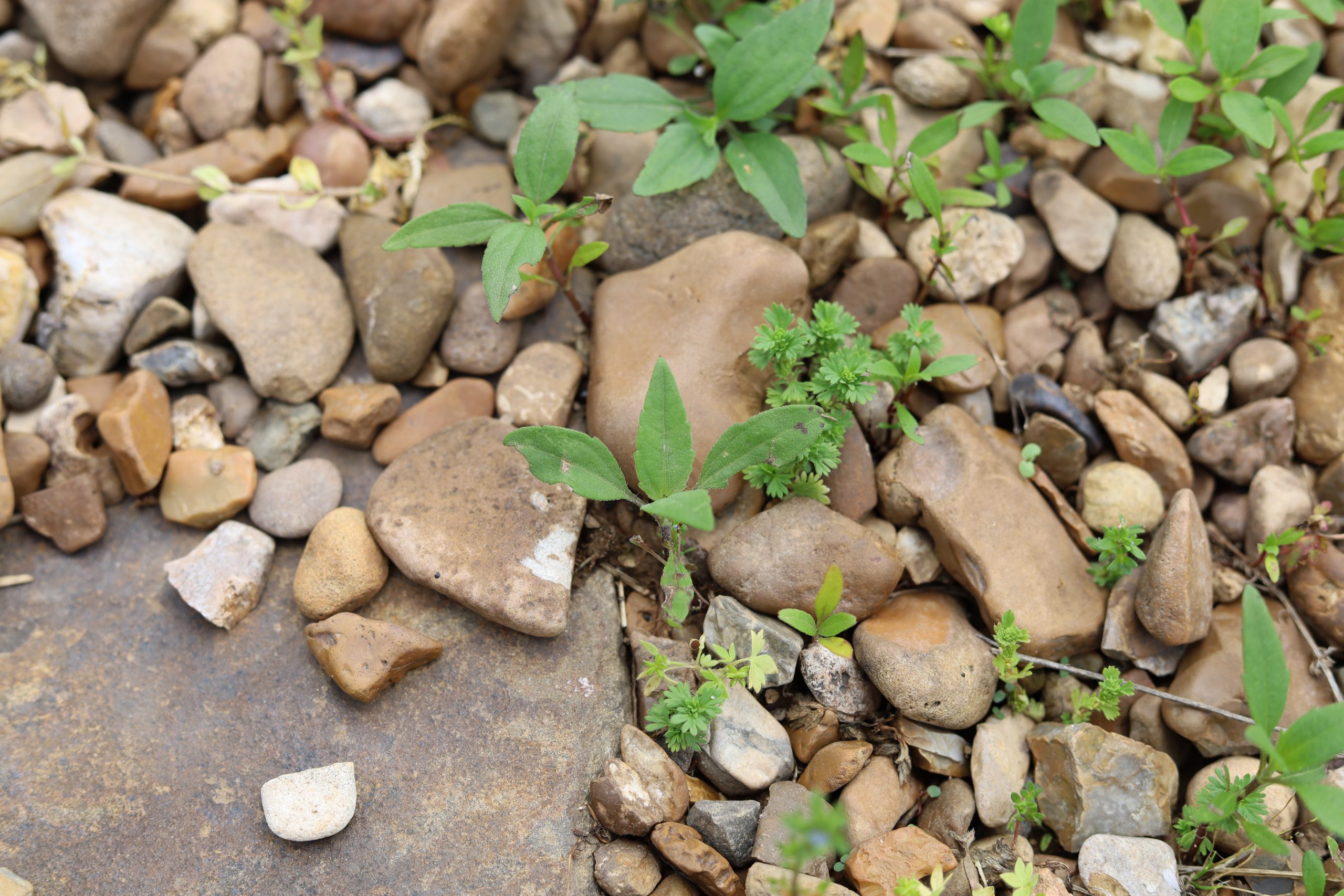
Marsh elder in May. Marsh elder plants are hardy and persistant. They spread easily and will take over a garden bed if you aren't careful.
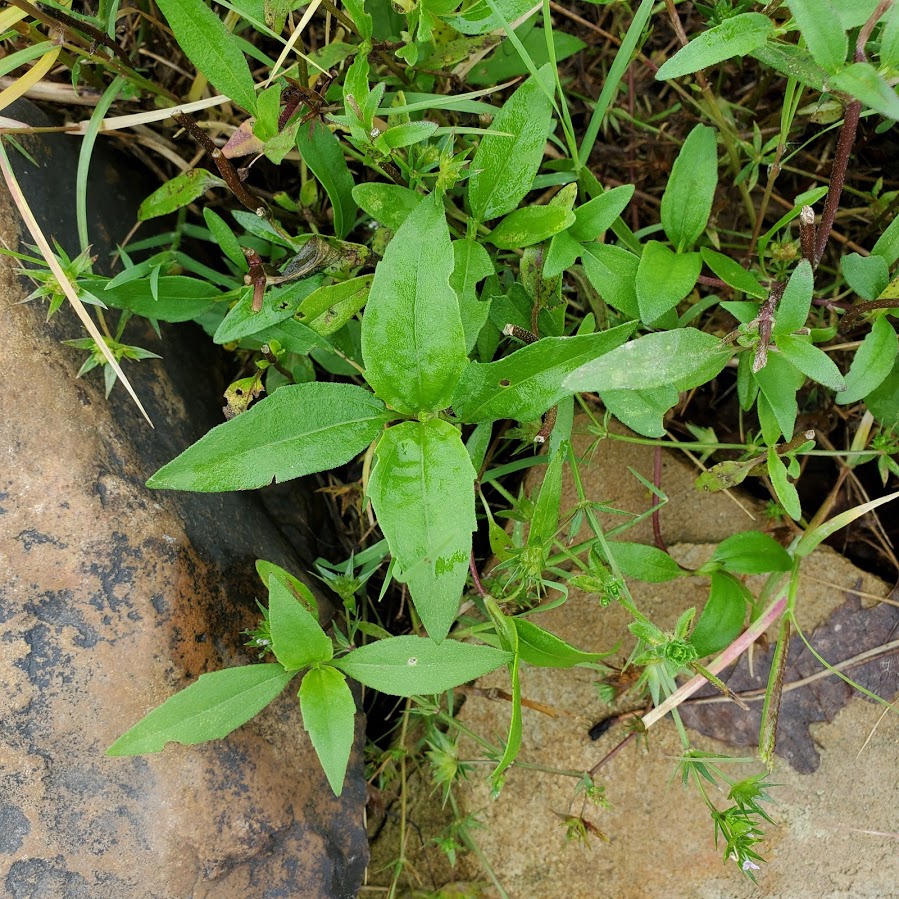
Marsh elder in June. When young, their resemblace to their relative the sunflower is especially pronounced.
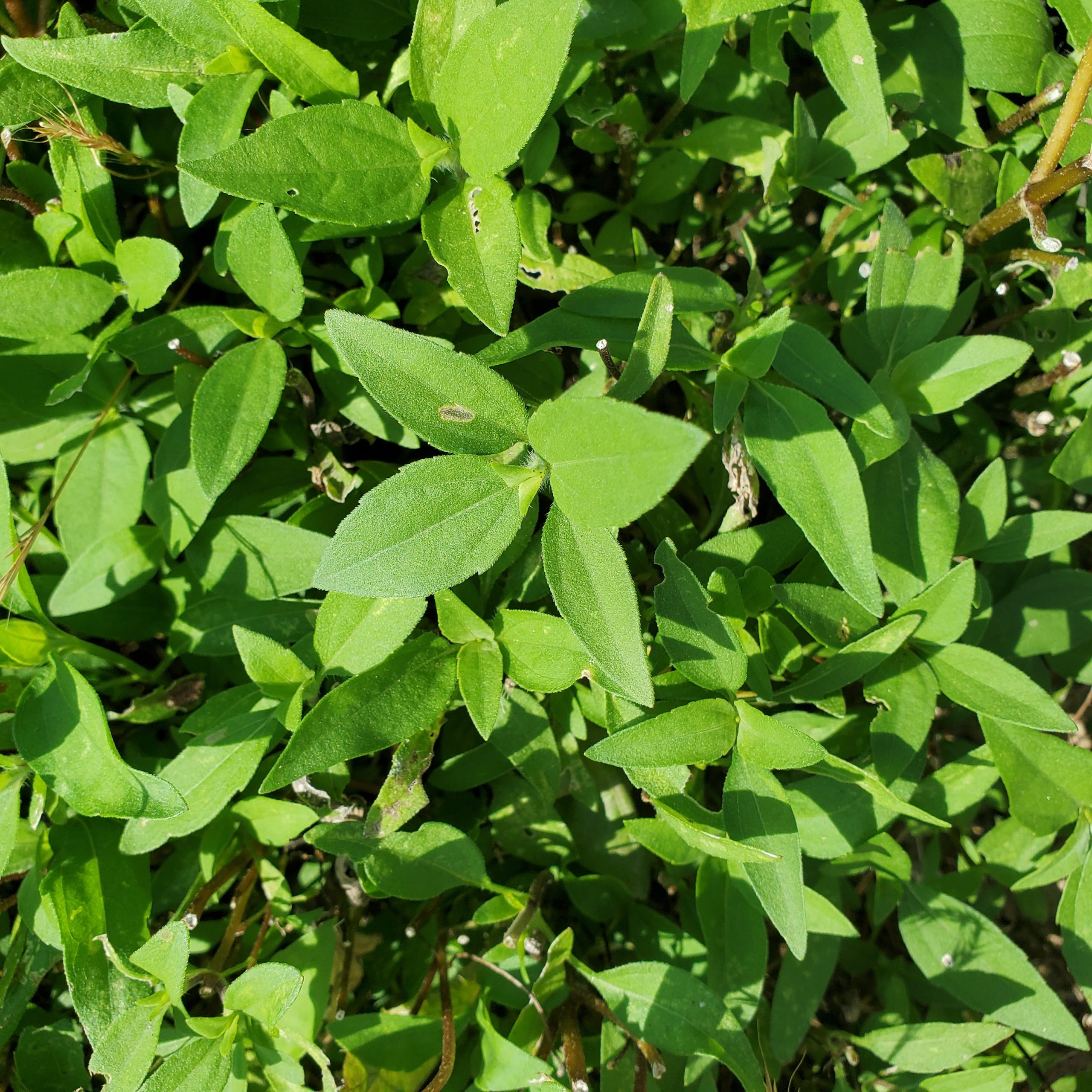
Marsh elder end of June
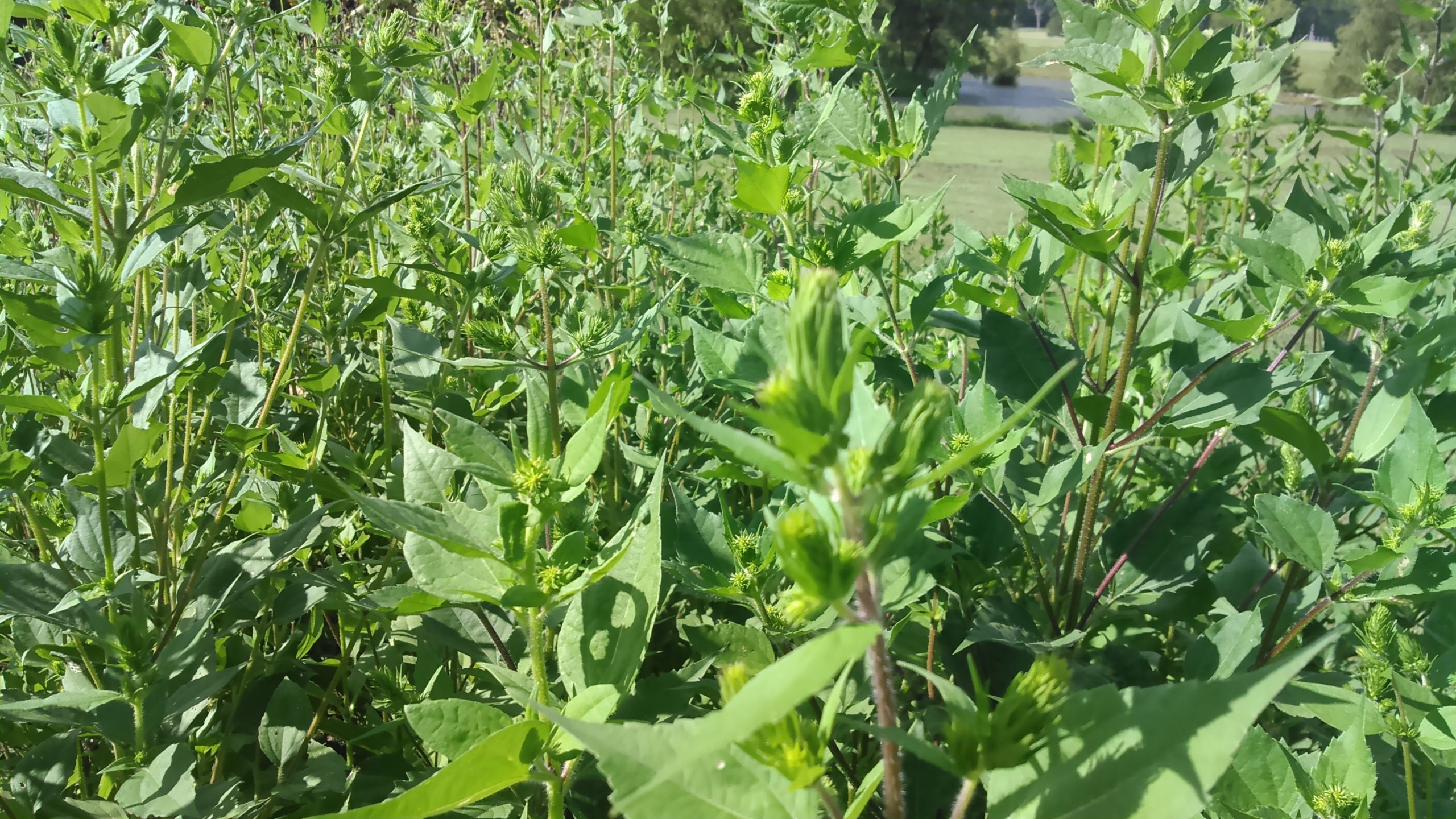
Marsh elder in August

Marsh elder in fall. By fall, the flowers have dried up and the black seeds of the marsh elder can be harvested.
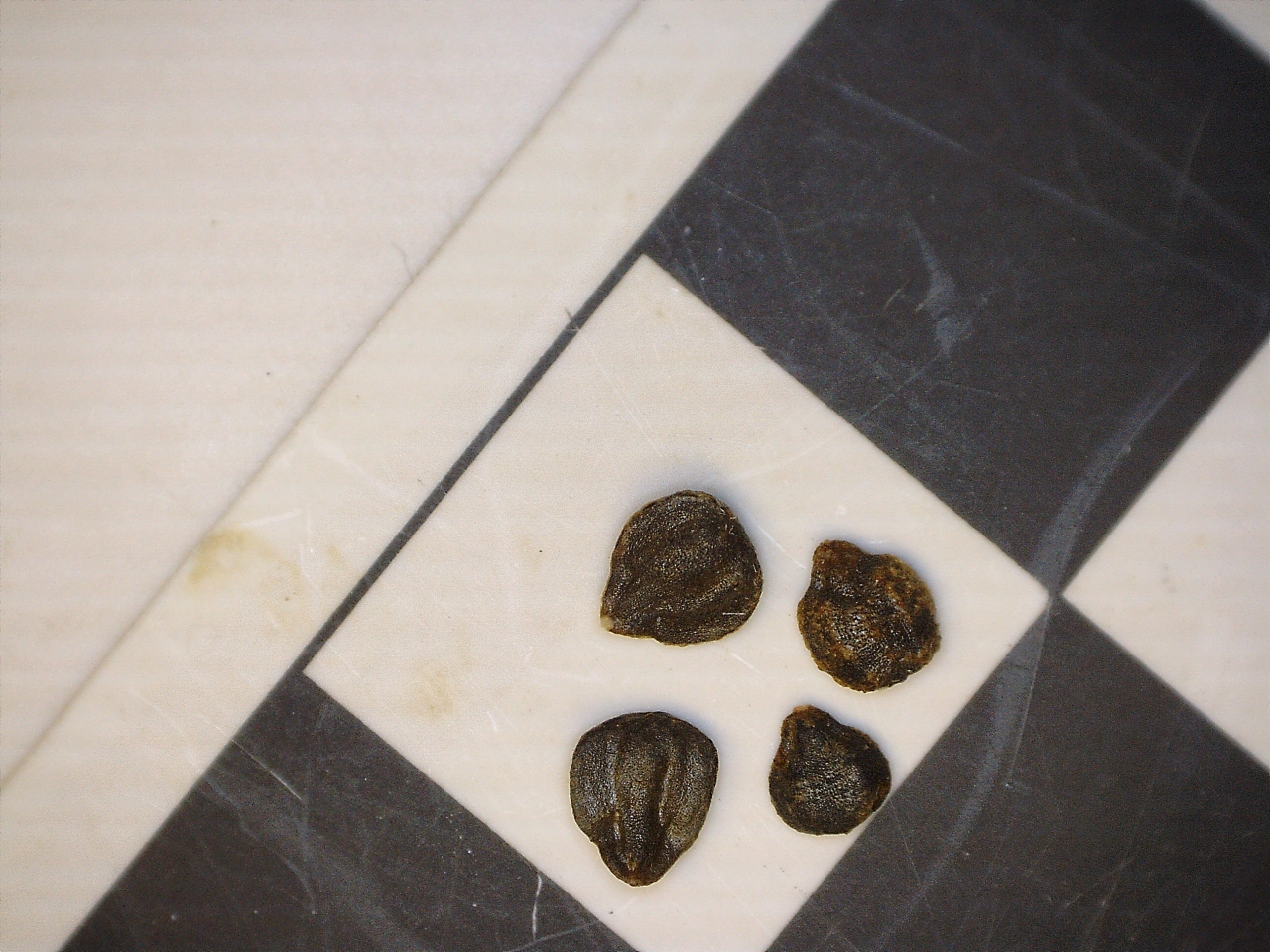
Marsh elder seeds. We are not sure exactly how marsh elder seeds were prepared for consumption although there is some evidence that they may have been roasted like we do today to their sunflower cousins.
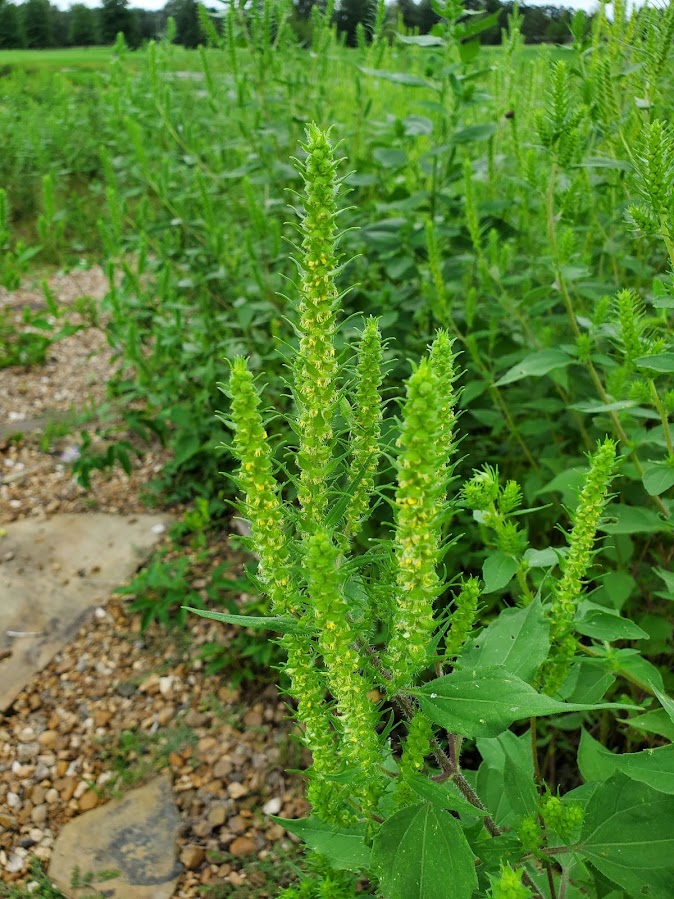
Marsh elder in September. By August, the green "flowers" of the marsh elder are out.

Marsh elder in October. By fall, the marsh elder flowers dry up and if not harvested, the seeds will drop to the ground, reseeding for next summer.
Marsh Elder References
Ash, David L., and Nancy B. Ash
1978 The Economic Potential of Iva annua and Its Prehistoric Importance in the Lower illinois Valley. In The Nature and Status of Ethnobotany, edited by Richard I. Form, pp. 300-341. Anthropoloigcal Papers no. 67. University of Michigan Museum of Anthropology, Ann Arbor.
Black, Meredith
1963 The Distribution and Archaeological Significance of the Marsh Elder, Iva annua L. Papers of the Michigan Academy of Science, Arts, and Letters 48:541-47.
Fritz, Gayle J.
2019 Feeding Cahokia: Early Agriculture in the North American Heartland. The University of Alabama Press, Tuscaloosa.
Smith, Bruce D.
1992 The Economic Potential of Iva annua in Prehistoric Eastern North America. In Rivers of Change: Essays on Early Agriculture in Eastern North America, by Bruce D. Smith, pp. 185-200. Smithsonian Institution Press, Washington DC.
Wagner, Gail E. and Peter H. Carrington
2014 Sumpweed or Marshelder (Iva annua). In New Lives for Ancient and Extinct Crops, edited by Paul E. Minnis, pp.65-101. The University of Arizona Press, Tucson.
Yarnell, Richard
1972 Iva annua var.: Extinct American Cultigen? American Anthropologist 74:335-341.
1978 The Domestication of Sunflower and Sumpweed in Eastern North America. In The Nature and Status of Ethnobotany, edited by Richard I. Ford, 289-300. Anthropological Papers no. 67. University of Michigan Museum of Anthropology, Ann Arbor.